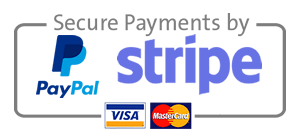To enable jQuery and other key libraries, the plugin retrieves scripts from Content Delivery Networks (CDNs).
The free version jQuery Easy uses the Google CDN and when not available (for instance Google does not host the Migrate scripts), falls back to the jQuery CDN.
jQuery Easy Profile, on the other end, allows you to choose between 4 major CDNs. While this does not seem like a big deal, it can alleviate some shortcomings due to the use of the Google CDN. One shortcoming being that some countries ban Google from their territories.
The following is a table of how the CDNs are used throughout the free and pro versions of jQuery Easy and details specifics for each:
| Google CDN |
Profiles Cloudlfare CDNJS |
Profiles jQuery MaxCDN |
Profiles Microsoft ASPNetCDN |
Profiles 5.0.2+ jsDelivr CDN |
|
| jQuery | x | x | x | x | x |
| Migrate | MaxCDN | x | x | x no v1.3.0 no v1.4.1 |
x |
| jQuery UI | x | x >= v1.8.13 |
x | x >= v1.8.5 |
x >= v1.12.0 base theme only |
| Profiles jQuery Mobile |
MaxCDN | x | x | x no v1.4.3 no v1.4.4 |
x >= v1.4.1 |
| Profiles Free J!4 Bootstrap |
CDNJS | x | CDNJS | x | x >= v3.1.1 |
| Profiles Free J!4 Popper |
CDNJS | x | CDNJS | CDNJS | x >= v2.0.0 |
When a CDN does not support a certain version, a default CDN is used instead. This isn't true for the latest versions which may not yet be supported but will eventually be.
Even though sub-versions are not required for some versions of jQuery and jQuery UI (prior to v1.9) when loading libraries from the Google CDN, they should be added for longer browser caching times.
Check the FAQs section to learn more about what a CDN is and why it is used in these extensions.





